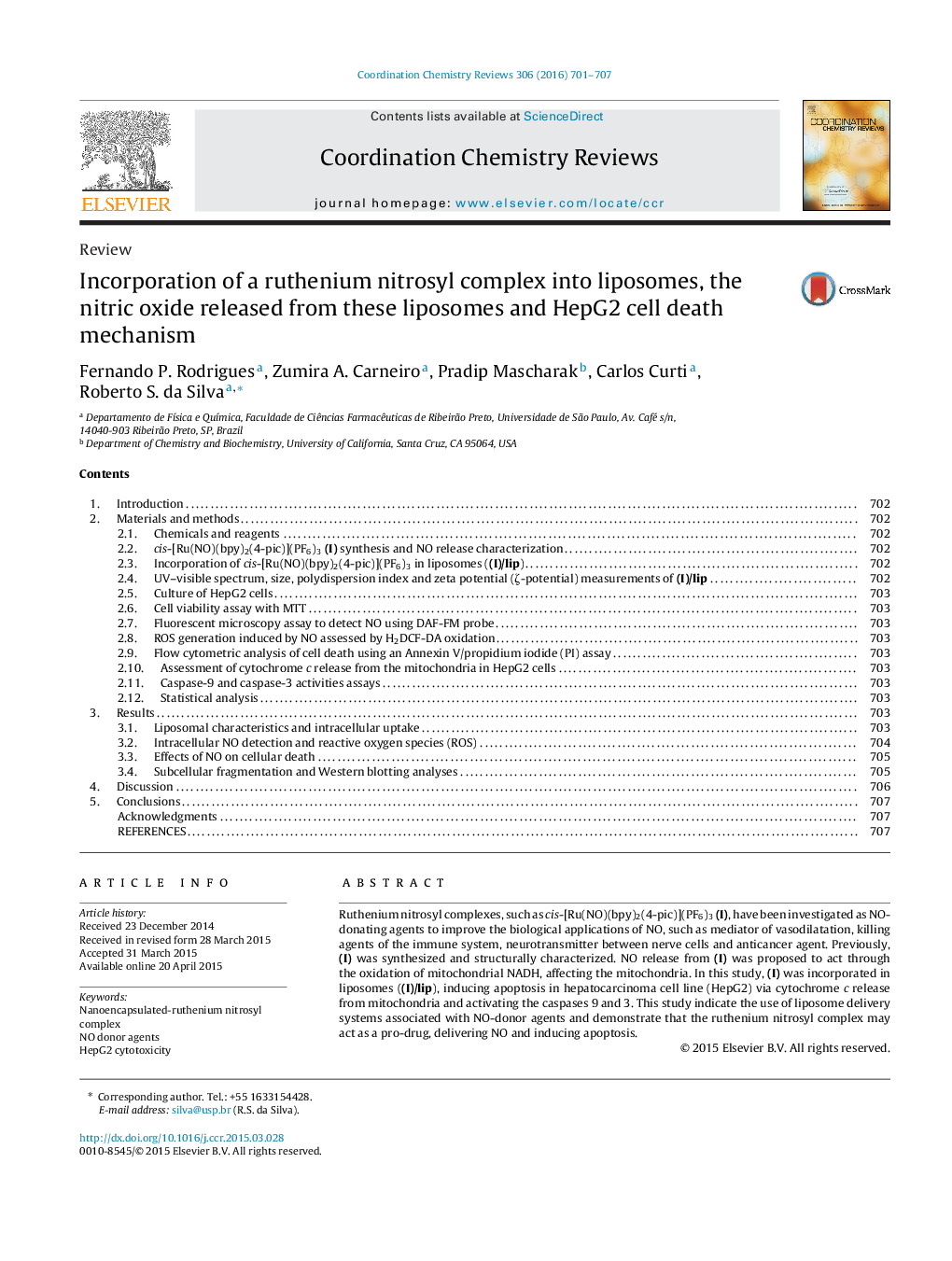| Article ID | Journal | Published Year | Pages | File Type |
|---|---|---|---|---|
| 1300885 | Coordination Chemistry Reviews | 2016 | 7 Pages |
•Cytotoxicity of liposome-encapsulated nitrosyl ruthenium complex against hepatocarcinoma cell line.•Incubation time-dependent cytotoxicity of encapsulated cis-[RuNO(bpy)2(4-pic)](PF6)3.•Intracellular NO detection and reactive oxygen species (ROS) formation.•Mechanism of caspase activation by NO release from a ruthenium complex as NO delivery agent.
Ruthenium nitrosyl complexes, such as cis-[Ru(NO)(bpy)2(4-pic)](PF6)3(I), have been investigated as NO-donating agents to improve the biological applications of NO, such as mediator of vasodilatation, killing agents of the immune system, neurotransmitter between nerve cells and anticancer agent. Previously, (I) was synthesized and structurally characterized. NO release from (I) was proposed to act through the oxidation of mitochondrial NADH, affecting the mitochondria. In this study, (I) was incorporated in liposomes ((I)/lip), inducing apoptosis in hepatocarcinoma cell line (HepG2) via cytochrome c release from mitochondria and activating the caspases 9 and 3. This study indicate the use of liposome delivery systems associated with NO-donor agents and demonstrate that the ruthenium nitrosyl complex may act as a pro-drug, delivering NO and inducing apoptosis.
Graphical abstractFigure optionsDownload full-size imageDownload high-quality image (133 K)Download as PowerPoint slide
